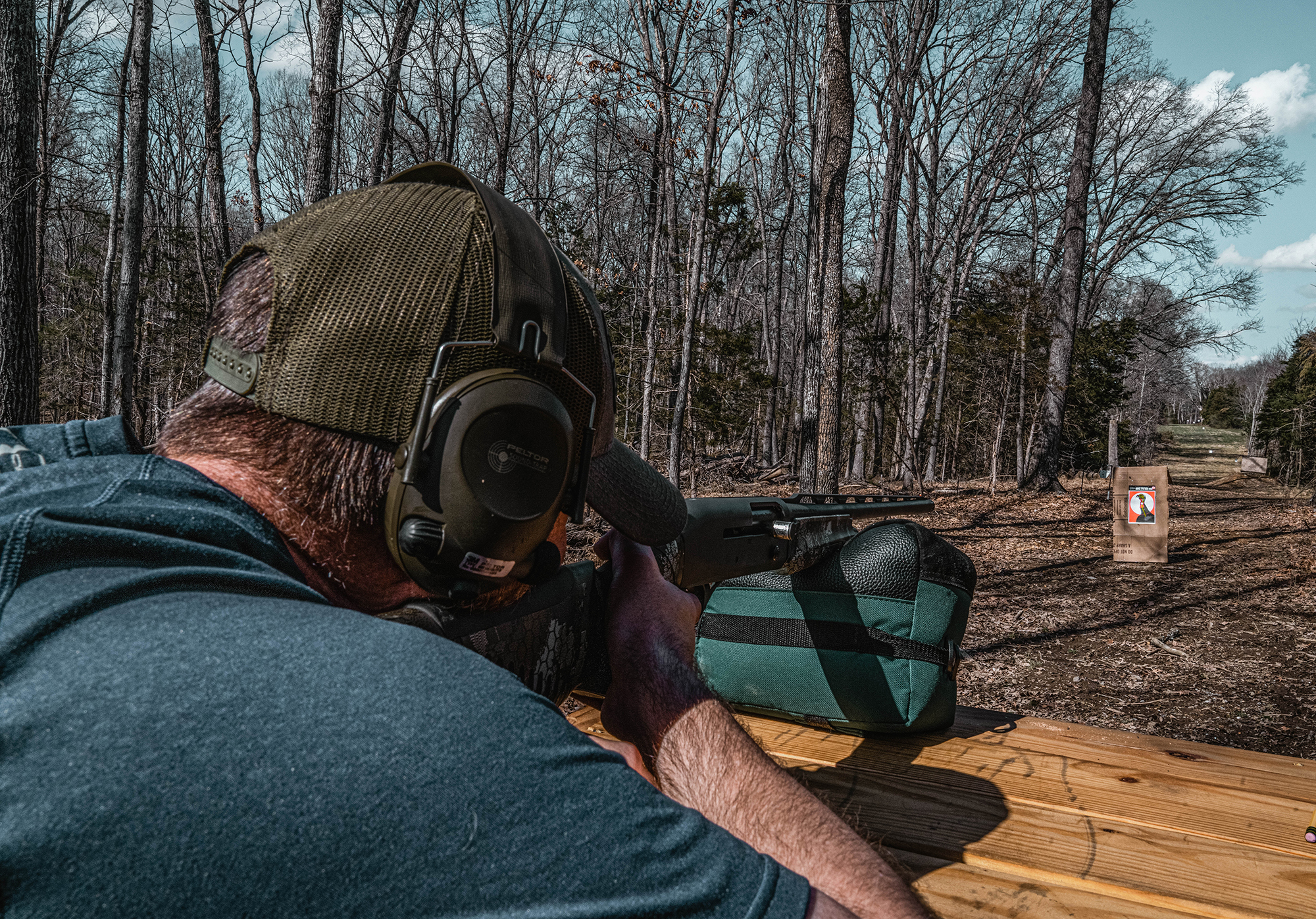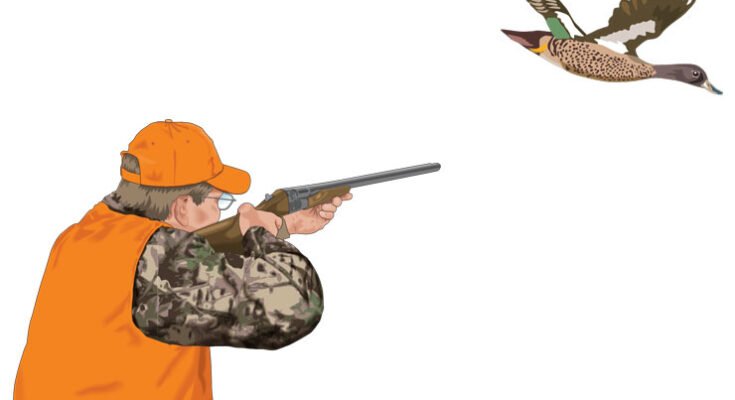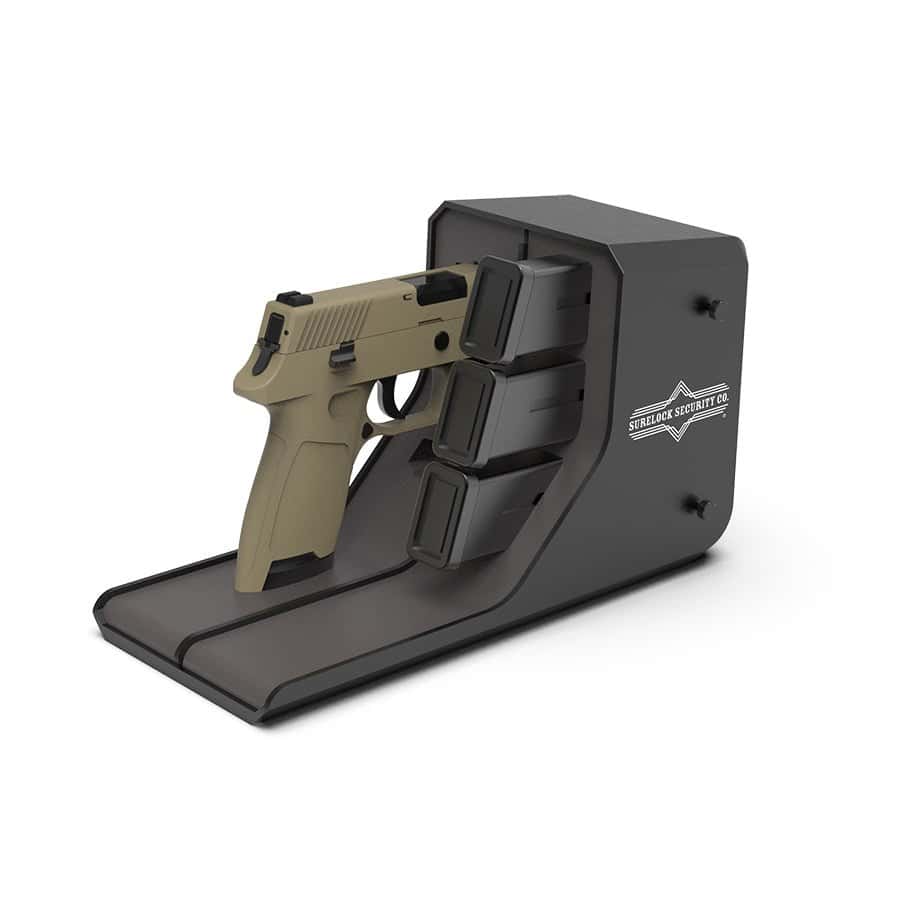Imagine you’re out on a crisp autumn morning, the air is fresh, and the thrill of the hunt is alive in your veins. You’re ready, your shotgun is in hand, but are you truly prepared for success?
The key to hitting your target isn’t just about having a good aim; it’s about knowing your weapon inside out. This is where the art of patterning your shotgun comes into play. Why do hunters take the time to pattern their shotguns?
It’s simple: to maximize their accuracy and efficiency in the field. By understanding how your shotgun disperses pellets at various distances, you gain a crucial edge. You’ll know exactly how your gun behaves, which can mean the difference between a miss and a successful hunt. Whether you’re a seasoned hunter or just starting out, patterning is an essential step that can significantly boost your confidence and performance. Keep reading to discover how this practice can transform your hunting experience and ensure every shot counts.

Shotgun Patterning Basics
Understanding the basics of shotgun patterning is crucial for anyone serious about hunting. Patterning your shotgun involves testing how your gun shoots different types of ammunition. You want to know how your shotgun performs so you can effectively target game. This is not just about hitting your target, but ensuring ethical and efficient hunting.
Shotgun Patterning: What Does It Mean?
Patterning a shotgun means checking the spread of pellets when you fire. You shoot at a large paper target from various distances. This helps you see the distribution of pellets. Knowing the spread allows you to predict how your shots will behave in the field.
Why Is Shotgun Patterning Important?
Imagine missing a shot because your shotgun didn’t perform as expected. Patterning helps you avoid this. It ensures your shotgun delivers a consistent pattern. This consistency means you can aim accurately, minimizing missed shots and wounding game.
Tools Needed For Shotgun Patterning
You’ll need a large paper target, a range finder, and a safe shooting area. Don’t forget your shotgun and various types of ammunition. Each type of ammo can produce different patterns. It’s wise to test several options to find the best match for your hunting needs.
How To Start Patterning Your Shotgun
Start by setting up your target at 40 yards. This is a common hunting distance. Fire several shots with the same type of ammo. Assess the pellet spread on the paper. Repeat this process at different distances and with different ammo.
Analyzing Your Shotgun Patterns
Look at the density and spread of pellets. Are they evenly distributed? Check for gaps and clusters. Gaps can mean missed targets; clusters indicate potential for better accuracy. Adjust your ammo choice based on your findings.
Personal Insights: The Impact Of Patterning
Years ago, I didn’t pattern my shotgun, and missed several ducks. I learned the hard way. Once I started patterning, my accuracy improved dramatically. It saved me time and increased my success rate in the field.
Are you confident your shotgun will perform as expected? Patterning could be the key to more successful hunts. Remember, ethical hunting means ensuring your shots are effective and humane. Take the time to pattern your shotgun and make every shot count.
Importance Of Consistency
Consistency is crucial for hunters. It ensures a reliable shot pattern. Without consistency, a hunter might miss their target. Each hunt demands accuracy and precision. This requires understanding how a shotgun performs. Patterning a shotgun helps achieve this reliability. Hunters can adjust for better results. This process involves testing and adjusting.
Importance Of Consistency In Shotgun Patterning
Consistency helps predict the spread of pellets. It allows hunters to gauge their shotgun’s effectiveness. Knowing the pattern can improve accuracy. Hunters aim for predictable performance. This is vital in different hunting conditions. Weather and terrain can affect a shot. Consistent patterns provide stability. They ensure that the shot behaves as expected.
Benefits Of Consistent Patterns
Consistent patterns increase a hunter’s confidence. When they trust their equipment, success rates improve. Patterns show where the pellets will land. Hunters can adjust their aim accordingly. This knowledge reduces mistakes. It results in more successful hunts. Consistency also aids in ethical hunting. A precise shot ensures a quick and humane kill.
Achieving Consistency Through Patterning
Patterning involves shooting at a target. Then, hunters analyze the pellet spread. Adjustments are made to improve the pattern. These adjustments might include changing the choke. Or using different ammunition. Each change affects the spread. Regular patterning ensures a consistent shot. It allows hunters to adapt to new environments. This adaptability is key in hunting.
Factors Affecting Shotgun Patterns
Understanding shotgun patterns is crucial for hunters. Patterns determine where pellets hit. Various factors influence these patterns. Knowing them can improve hunting success.
Choke Selection
A choke is a device at the barrel’s end. It changes the spread of the pellets. A tighter choke keeps pellets close. A looser choke spreads them wide. Choose a choke based on your target distance.
Ammunition Choice
Ammunition affects how pellets spread. Shot size and type matter. Larger shot sizes hit harder but cover less area. Smaller shot sizes spread more but may not penetrate deeply. Select the right ammunition for your hunting needs.
Barrel Length
Barrel length impacts pattern tightness. Longer barrels offer tighter patterns. Shorter barrels spread pellets wider. Consider your hunting style and target distance. Choose a barrel length that fits your needs.
Techniques For Patterning
Hunters pattern their shotguns to ensure accuracy and effectiveness. By observing pellet spread, they adjust for better performance. This technique helps in hitting targets more reliably.
When you’re out in the field, accuracy can make all the difference. That’s why many hunters take the time to pattern their shotguns. This process helps ensure your shots are effective and ethical. By understanding how your shotgun distributes pellets, you can adjust for better accuracy and efficiency. But how exactly do you pattern a shotgun? Let’s dive into some actionable techniques.Setting Up The Target
Before you start shooting, you need a proper target. Use a large sheet of paper, at least 40 inches square, to capture the spread of the pellets. You can find these at most hunting stores or make your own from butcher paper. Position the target at a typical shooting distance, often 30 to 40 yards. Ensure it’s securely attached to a stand or frame. This setup mimics real hunting conditions. Mark the center with a visible bullseye. This helps you align your shots consistently and see where the pellets hit.Measuring Spread And Density
After firing, examine the pattern left on the target. Look at how the pellets are distributed. Are they clustered in the center, or are there gaps? This can tell you a lot about your shotgun’s performance. Use a ruler to measure the diameter of the spread. A tighter pattern generally means more pellets will hit the target, increasing your chances of success. Count the number of pellets within a certain area, like a 30-inch circle around the bullseye. This gives you a sense of density and whether your shot will effectively hit your target. Reflect on your results. Did the pattern meet your expectations? Adjusting your choke or changing your ammunition might be necessary. This process can seem meticulous, but it’s crucial for honing your skills. Next time you’re in the field, you’ll be more confident in your shot. Isn’t that worth the effort?Benefits Of Patterning
Patterning a shotgun is crucial for hunters. It ensures better accuracy and success in the field. By understanding the spread of pellets, hunters can make informed decisions. This knowledge leads to improved performance and ethical hunting practices.
Improved Accuracy
Patterning your shotgun helps you understand its shot spread. This understanding enhances your shooting precision. Every shotgun behaves differently with various loads. Patterning reveals how your gun performs under different conditions. You can adjust your aim and choose the best load. This results in more accurate shots and better hunting success.
Better Game Management
Patterning aids in responsible game management. It ensures your shots are effective and humane. Knowing your gun’s pattern minimizes the risk of wounding game. This reduces the suffering of animals and increases ethical hunting practices. Precise shots ensure a quick and humane kill. This contributes to sustainable wildlife management.

Common Mistakes To Avoid
Hunters pattern their shotguns to ensure accuracy and precision. Mistakes like ignoring different ammunition types or overlooking environmental conditions can lead to missed targets. Properly patterning a shotgun improves success rates and ensures ethical hunting practices.
Understanding the ins and outs of shotgun patterning is crucial for any hunter looking to make their shot count. Yet, many fall into common pitfalls that can lead to poor performance in the field. By recognizing and avoiding these mistakes, you can ensure your shotgun is performing at its best, improving your accuracy and confidence.Incorrect Choke Selection
Choosing the wrong choke can drastically affect your shot pattern. It’s easy to assume one choke fits all situations, but each has a specific purpose. For instance, a full choke might provide a tighter pattern, ideal for long-range shots. But using it for close-range hunting can lead to missed opportunities due to its narrow spread. Consider the distance and type of game before selecting your choke to ensure optimal performance.Neglecting Distance Testing
Many hunters make the mistake of only testing their shotguns at one distance. This can lead to surprises when hunting in varied environments. You might find your pattern is perfect at 20 yards, but drastically different at 40 yards. Test your shotgun at multiple distances to understand how your pattern changes and adjust accordingly.Ignoring Ammunition Variability
Not all ammunition is created equal, and using different brands or loads can alter your shotgun’s pattern. Some hunters stick to one type without realizing how others may offer better results. Experiment with different shells to see how they affect your pattern. You might discover that a specific brand provides a tighter or more consistent spread.Overlooking Environmental Factors
Weather and terrain can influence shot patterns. Wind can shift pellets, and dense foliage might require a broader spread. Think about the conditions you’ll be hunting in. Will there be wind? Is the area open or cluttered with vegetation? Adjust your setup to account for these environmental factors, ensuring your pattern remains effective.Skipping Regular Pattern Checks
Patterns can change over time due to wear and tear on your shotgun. Many hunters forget to regularly check and update their patterning. Have you noticed fewer successful hunts recently? It might be time for a pattern check. Regular testing ensures your shotgun remains accurate and reliable, keeping you prepared for any hunting scenario. — Taking the time to pattern your shotgun correctly can mean the difference between a successful hunt and a missed opportunity. Are you making any of these common mistakes? Adjust your approach and watch your hunting success soar.Advanced Patterning Tips
Hunters know precision is crucial in the field. Advanced patterning tips can enhance your shotgun’s performance. By fine-tuning your approach, you’ll hit your target more effectively. These tips help you adapt to different conditions and prey.
Weather Considerations
Weather affects shotgun performance. Wind can change shot patterns. Heavy rain impacts shot spread. Pattern your shotgun in various conditions. Test in windy, rainy, and clear weather. Adjust your aim based on the wind’s direction. In rain, check the spread to ensure accuracy. Practice makes you familiar with these shifts.
Adjusting For Different Game
Different game requires different tactics. Small birds need tighter patterns. Large game benefits from wider spreads. Adjust your choke for your target. Experiment with various loads. Try different shot sizes for accuracy. Understand the distance and size of your target. This knowledge helps you adapt your patterning strategy.

Frequently Asked Questions
What Is Shotgun Patterning?
Shotgun patterning involves testing how a shotgun distributes pellets. Hunters do this to understand pellet spread and density. It helps ensure a successful and ethical hunt by knowing how the shotgun will perform at various distances.
How Do Hunters Pattern Their Shotguns?
Hunters pattern their shotguns by shooting at large paper targets. They analyze the pellet distribution and adjust choke or ammunition. This process helps them achieve a consistent and effective spread for hunting.
Why Is Shotgun Patterning Important?
Patterning is crucial for ensuring successful and ethical hunts. It allows hunters to understand their weapon’s performance. This knowledge helps in making accurate shots, reducing the chances of wounding game.
When Should You Pattern A Shotgun?
Hunters should pattern their shotguns before hunting season begins. This ensures they are familiar with their weapon’s performance. It’s also important when changing ammunition or chokes, as these can affect pellet spread.
Conclusion
Patterning shotguns boosts accuracy and success for hunters. It helps shooters understand their firearm better. Knowing the spread of pellets ensures a more effective shot. This preparation reduces missed targets and increases confidence. Hunters can tailor their approach based on pattern results.
It’s an essential step before heading into the field. Safety improves too, as hunters know their gun’s range. Successful hunting relies on preparation and precision. Patterning is a simple yet crucial process. Hunters, take the time to pattern your shotgun.
See the difference it makes in your hunting experience.



